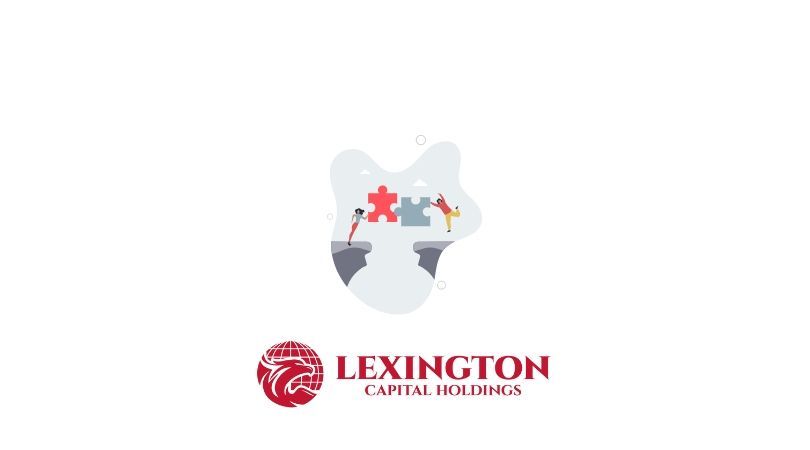Preparing for Fall: Key Strategies for Business Success as Summer Winds Down
Preparing for Fall: Key Strategies for Business Success as Summer Winds Down
As the summer season gets ready to come to a close, business owners across various industries are beginning to shift their focus toward the upcoming fall season. This period of transition offers a valuable opportunity to reflect on summer’s successes and prepare for the challenges and opportunities that lie ahead. Whether you’re in retail, hospitality, or any other sector, here are some key considerations to help you smoothly transition from summer to fall.
1. Review and Analyze Summer Performance
As the summer winds down, it's an ideal time to review your business’s performance. Analyze sales data, customer feedback, and operational efficiency. What were your top sellers? Which promotions or marketing strategies resonated most with your customers? Understanding what drove success (or where improvements are needed) during the summer months will provide valuable insights to inform your fall strategy.
2. Update Your Inventory and Offerings
With the changing season, customer needs and preferences also shift. It’s essential to update your inventory and service offerings to align with the upcoming fall trends. If you're in retail, consider phasing out summer products and introducing fall collections. For hospitality or service-based businesses, consider updating your menu, service packages, or offerings to reflect the seasonal shift.
3. Plan Seasonal Marketing Campaigns
As you prepare for fall, start crafting your seasonal marketing campaigns. Fall is synonymous with back-to-school, holiday prep, and cozy, comforting themes. Tailor your marketing messages to resonate with these seasonal sentiments. Whether it’s launching a back-to-school promotion or highlighting fall-themed products, early planning will ensure your campaigns are timely and impactful.
4. Prepare for Holiday Demand
Fall marks the beginning of the busy holiday season. Now is the time to start preparing for the potential increase in demand. Assess your staffing needs, ensure your supply chain is robust, and consider any additional inventory you may need to stock up on. Early preparation can help you avoid last-minute challenges and capitalize on the holiday rush.
5. Evaluate Your Financial Position
The transition from summer to fall is also a good time to evaluate your financial position. Review your summer revenue and expenses, and create a financial plan for the fall season. Consider any upcoming expenses related to inventory, marketing, or staffing, and ensure you have the necessary capital to support your business’s needs. If you anticipate a need for additional funding, now is the time to explore your options, whether through traditional or alternative financing solutions.
6. Enhance Your Digital Presence
As consumer behavior increasingly shifts online, a strong digital presence is more important than ever. Take this opportunity to update your website, refresh your social media profiles, and optimize your online store. Consider running digital campaigns that align with fall trends and holidays. A well-maintained digital presence will help you engage with customers and drive sales throughout the fall season.
7. Focus on Customer Retention
With the summer season wrapping up, it’s important to focus on retaining the customers you’ve gained over the past few months. Consider implementing loyalty programs, sending personalized follow-up emails, or offering exclusive fall promotions to keep your customers engaged and coming back for more.
8. Prepare for Potential Challenges
Every season brings its own set of challenges, and fall is no exception. Whether it’s unpredictable weather, changes in consumer behavior, or supply chain disruptions, it’s important to have contingency plans in place. Anticipate potential challenges and develop strategies to mitigate their impact on your business.
Conclusion
As summer gets ready to come to a close, the transition to fall presents an opportunity for business owners to reflect, plan, and prepare. By reviewing summer performance, updating your offerings, planning seasonal campaigns, and focusing on customer retention, you can set your business up for a successful fall season. With careful planning and proactive strategies, you’ll be well-equipped to navigate the upcoming season and capitalize on the opportunities it brings.

When you apply for business funding, your application goes through a critical stage—underwriting. This is where lenders evaluate risk and determine whether your business qualifies for financing, and under what terms. Understanding what underwriters look for can help you strengthen your application, avoid delays, and increase your approval odds.

Not every business enjoys a steady stream of income. For many companies—especially those in seasonal industries, contracting, or project-based work—revenue can shift dramatically from month to month. These ups and downs are normal, but they can make managing cash flow, payroll, and operating expenses challenging. At Lexington Capital Holdings, we understand that fluctuating revenue doesn’t mean instability—it just means you need the right financial tools to stay balanced and grow confidently.

The Challenge of Hyper-Growth For many startups, growth isn’t the problem—it’s managing it. Rapid scaling demands capital for hiring, marketing, technology, and operations. But too often, founders find themselves cash-strapped right when they need resources the most. Choosing the right financing strategy can be the difference between sustainable growth and burning out too soon.

When it comes to business financing, the terms you secure are just as important as the funding itself. Lower interest rates, flexible repayment schedules, and higher approval amounts can mean the difference between simply surviving and setting your business up to thrive. The good news? Business owners often have more negotiating power than they realize. At Lexington Capital Holdings, we’ve seen firsthand how preparation and strategy can help secure stronger terms. Here’s how you can do the same:

For many businesses, waiting on customer payments can feel like standing still when you’re ready to move forward. Delayed invoices, extended payment terms, or slow collections create cash flow gaps that make it harder to cover expenses, pay employees, or seize new opportunities. The truth is—even successful, profitable companies face this challenge. The key isn’t avoiding it, but managing it strategically with the right funding solutions

Securing business funding is a milestone—but the real impact comes from how you put that capital to work. Every dollar borrowed should fuel momentum, strengthen operations, and generate measurable returns. Unfortunately, too many businesses stop at “getting approved” and miss the chance to maximize their return on investment (ROI). At Lexington Capital Holdings, we believe funding isn’t just about access to capital—it’s about creating opportunity. Here’s how to ensure your financing delivers the highest ROI:

In today’s fast-paced business environment, standing out from the competition requires more than just great products and services—it takes strategy, timing, and smart financial decisions. One of the most overlooked tools in building and maintaining a competitive advantage is business financing. When leveraged correctly, financing doesn’t just help you “get by”; it can actually position your business to outpace competitors and capture new opportunities.

In business, surprises aren’t a matter of if—they’re a matter of when. Whether it’s a sudden equipment breakdown, an unexpected dip in sales, or a market shift that requires quick adaptation, unforeseen expenses can test even the most successful companies. The difference between thriving and struggling often comes down to how well you’ve prepared.

When most business owners hear the word debt, it sparks feelings of stress or risk. But here’s the truth—debt isn’t always a bad thing. In fact, when managed strategically, debt can become one of the most powerful tools to grow, stabilize, and scale your business. At Lexington Capital Holdings, we work with business owners every day who are navigating this very question: Is taking on debt the right move for me? Let’s break down the difference between “good” and “bad” debt so you can make informed financial decisions.

In today’s business world, financing options are everywhere—but choosing the right path can feel overwhelming. From traditional bank loans to alternative lending solutions, the fine print and fast-changing requirements often leave business owners spending more time deciphering funding terms than actually running their businesses. That’s where the value of a dedicated funding advisor truly shines. At Lexington Capital Holdings, we’ve seen firsthand how personalized guidance can transform the funding experience for business owners of all sizes.

